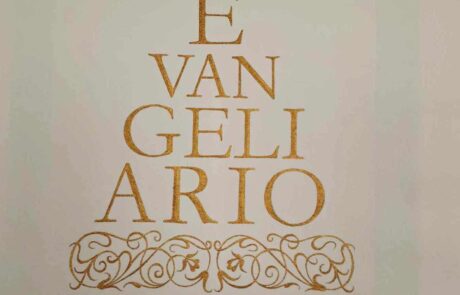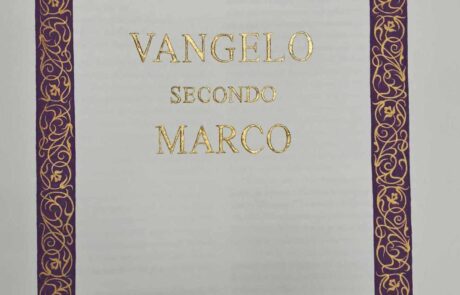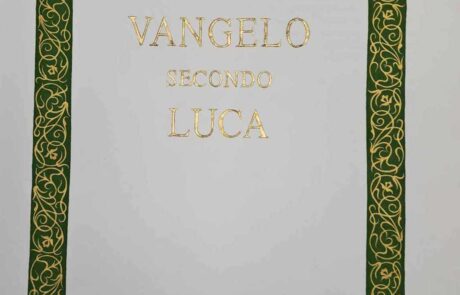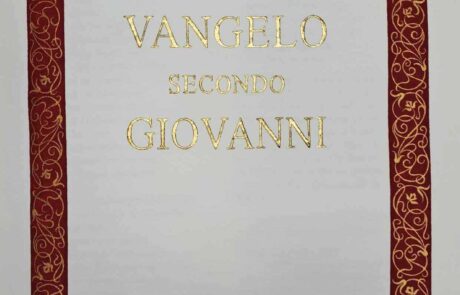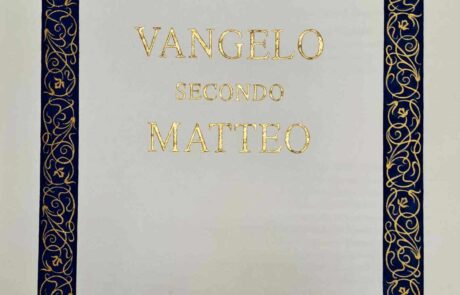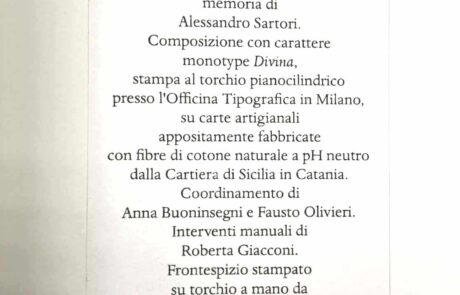THE EVANGELISTARY IN A CONTEMPORARY KEY – THE SARTORI DONATION ON EXHIBITION AT THE DIOCESAN MUSEUM IN GUBBIO.
The Evangelistaryis a Christian liturgical book in which the fourGospels are collected. There are alsocollections of passages from the Gospelsthat are readduring Mass atvarious times of the year: these are the evangelistaries, widespread in the Middle Ages and oftenconfusedprecisely with the evangeliaries. In reality, the differenceappearsimmediatelyuponexamination of the texts, which, in the evangelistaria, generallybegin with the formula In illo tempore (“At that time”). The first evangelistarieswerecomposedaround the 7th century. Many of them, embellished with drawings, miniatures and richbindings, constituteauthenticbibliographicaltreasures. The Evangeliary, precious and solemn, is the only one that the deacon can carry in processionduring the rites of introduction: itis the symbol of Christ, itis the sign of hispresenceamongus. A book-presencethatattractsstares and praise. Bibles or lectionaries are notcarried in procession, only the Gospel Book. Placed on the altar, from thereitpresides over the liturgy of the word, untilitreaches the ambo while the Gospel isbeingsung, to be celebrated.
The Gospel Book is a veryimportant symbol in some celebrations: itispreciselythesethat make usunderstanditssignificance. Think, for example, of episcopalordinations: the imposition and handing over of the Gospel Book to the newlyordainedbishop shows that one of the main duties of bishopsis to proclaim the Gospel of Christ to men. During the ordinationprayer, while the electremains standing, the mainordainingbishop takes the Gospel Book from a deacon and places it open on the head of the elect. Two deacons, standing to the right and left of the ordinand, hold the Gospel Book abovehis head until the ordinationprayerisfinished. Itismoving to see a future bishop in the custody of the Gospel Book. At the end of the ordinationprayer, the deaconsremove the Gospel Book untilitishanded over to the ordained after the chrismalanointing. At the Diocesan Museum of Gubbio, an edition of the Gospel Book by Alessandro Sartori wastemporarilyplacedas a contemporary work. The text wasexhibited with an in-depth graphic display of the mostrepresentativeilluminated and decorated pages.
Alessandro Sartori – Sartori Donation Diocese of Gubbio
Born in Milan on June 11, 1945 and died in Gubbio on February 6, 2013, Alessandro Sartori, after high school, obtained a diploma in directing and screenwritingat the Cinema School of Milan in 1967. In 1970, he moved to Rome and begancollaborating with RAI. After educational experiencesabroad, in 1995 he founded the editorial brand ‘unaluna’ in Milan, and began publishing, establishingcontacts in various countries around the world, mainly China, Japan and the United States.

